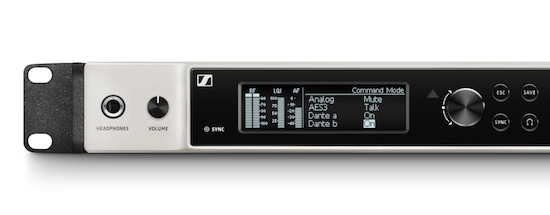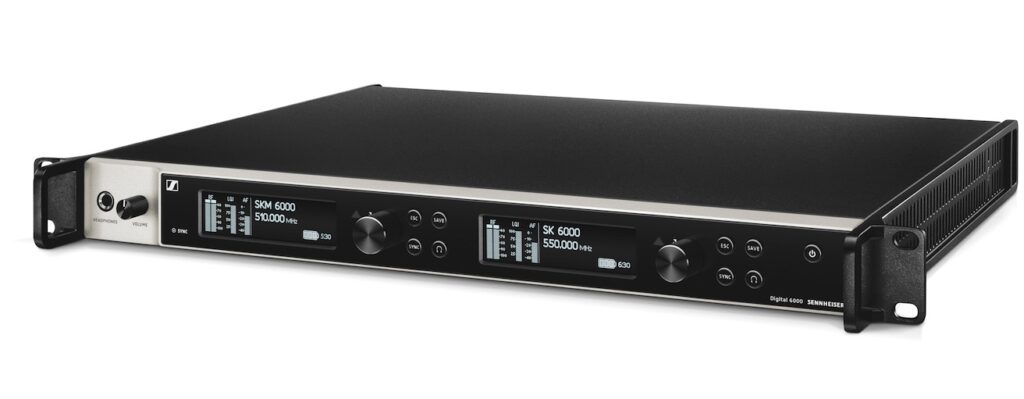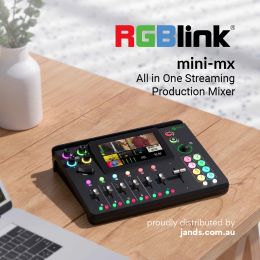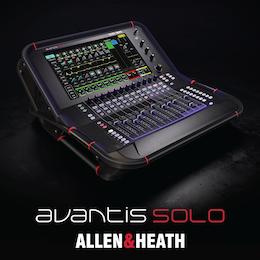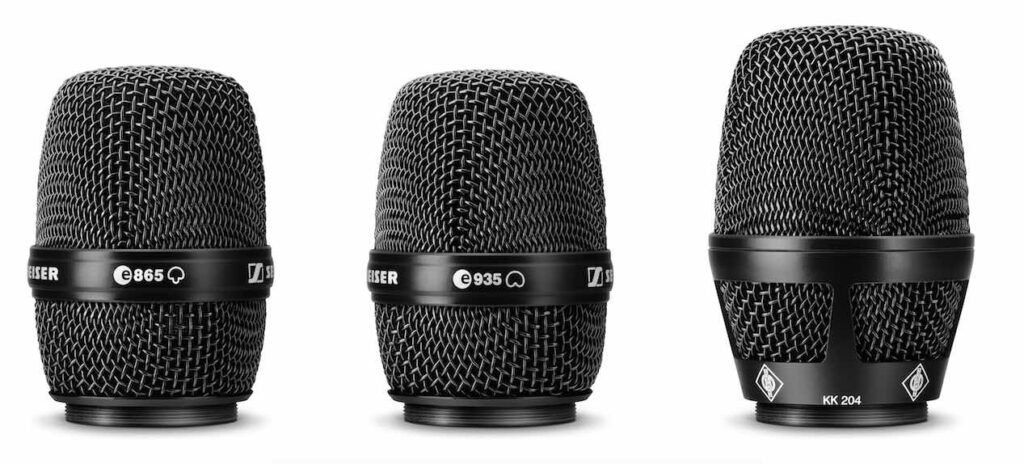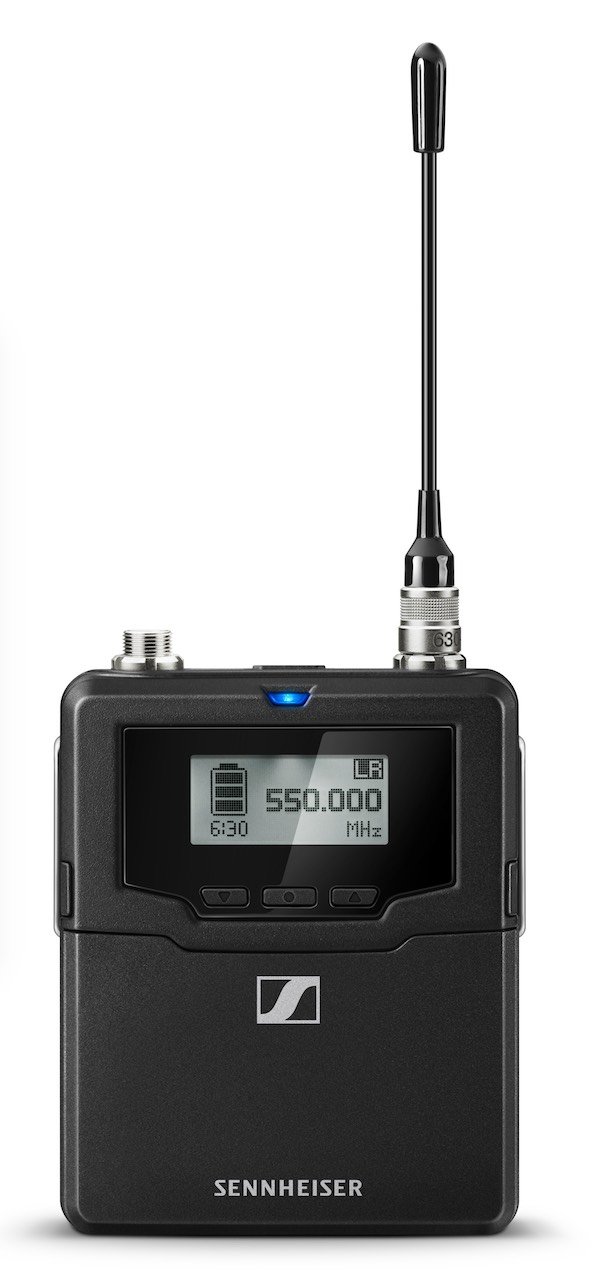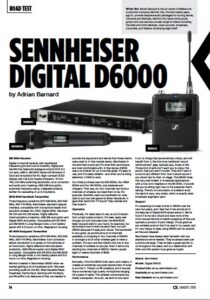Subscribe to CX E-News
ROADTEST
Sennheiser Digital D6000
by Adrian Barnard.
Adrian Barnard is the co-owner of Melbourne production company Monitor City. Formed twelve years ago to provide bespoke audio packages for touring bands, concerts and festivals, Monitor City have continuously grown and now service a broad range of clients including the Falls and Unify festivals, local councils, broadcast, corporate, and theatre, employing eight staff.
EM 6000 Receiver
Digital 2-channel receiver with equidistant frequency grid and true bit diversity. Digital and transformer balanced analogue outputs XLR, 6.3 mm jack, AES-3, EM 6000 Dante with Brooklyn II Card and Amphenol RJ-45. High-contrast OLED display with LQI (Link Quality Indicator). 19 inch 1RU, 244 MHz switching bandwidth, error correction and audio error masking, AES-256 encryption, automatic frequency setup, integrated antenna splitter for cascading of up to 8 systems.
SKM 6000 Handheld Transmitter
Three frequency variations (470-558 MHz, 550-638 MHz, 630-718 MHz). Sennheiser standard capsule interface, compatible with microphone heads from evolution wireless G3, 2000, Digital 9000, Neumann KK 204 and KK 205 series. Highly effective intermodulation protection, AES 256 encryption and Digital 9000 encryption. Compatible with EK 6042 and EM 9046 in Long Range mode. Li-ion battery packs with 5.5 hours run time. Magnesium housing.
SK 6000 Bodypack Transmitter
Three frequency variations (470-558 MHz, 550-638 MHz, 630-718 MHz). Sennheiser 3-pin connector allows connection to a variety of microphones or an instrument. Highly effective intermodulation protection, AES 256 encryption and Digital 9000 encryption. Compatible with EK 6042 and EM 9046 in Long Range mode. Li-ion battery packs with 6.5 hours run time. Magnesium housing.
We first invested in Sennheiser D6000 when we started getting a lot of broadcast work. We were providing audio for the AFL Most Valuable Player broadcast, Family Feud, Dancing with the Stars, and RockWiz Live. Because of that, we needed to provide the equipment and results that those clients were used to.
In that market sector, Sennheiser is the dominant brand and it’s what their technicians are most comfortable with. In that sense, D6000 was a no-brainer for us. It sounds great, it’s easy to use, and it’s totally reliable – and when you’re doing television, it HAS to work.
Our initial purchase was two EM 6000s, four SKM 6000s and four SK 6000s, plus batteries and chargers. That way, our four channels can be four channels of whatever we need them to be. For example, RockWiz used two handhelds for Julia Zemiro and two belt packs for Brian Nankervis. It gave their techs the ‘TV sound’ they wanted and they loved it.
Operation
Physically, it’s really easy to use, as you’d expect from a high quality product. It’s been really well thought out and manufactured; the SKM 6000 feels nice and solid in your hand, for example. Our technicians love it when we send them out with D6000 because it’s easy and robust. The bandwidth is very good, as are the amount of channels available, so dropping in four channels of D6000 in amongst a lot of other wireless gear is never a problem. It’s very rare that there’s only two or four channels of wireless on any job. Even if we’re only sending four channels of D6000, there’s usually eight or twelve channels of IEMs.
Performance
Sonically, I find the D6000 both warm and creamy. It creates an extremely accurate reproduction of what is put into it. There’s no RF artefacts, and it sounds like an extremely high quality microphone hanging off a piece of cable. The wireless components are totally transparent. As such, we tend to only send it out on things that are extremely critical, and will benefit from it, like the more traditional ‘sound reinforcement’ gigs; typically jazz, blues or folk.
Those kind of acts don’t want you to colour the sound, they just want it louder. They don’t want it to sound any different from how it would sound if you stood next to them on stage. The D6000 does this very well indeed. In broadcast applications, with a nice omni headset on the SK 6000, it sounds like you’re sitting right next to the presenter that’s talking. There’s no colouration or artefacts at all; the result is very, very pretty, which is exactly what broadcast engineers want.
Support
I’m expecting to invest further in D6000 over the next two years, and I feel that it has almost all of the features of Digital 9000 series above it. We’ve found it to be very robust and have none of the minor issues like bits of plastic snapping off that are typically a product of poor design. It’s as good as any wireless product that I’ve used in my career, and I’m very happy to keep using D6000 and its variants as they are released.
Sennheiser have always been fantastic with any assistance we’ve needed. They’ve always been just a phone call away. They’ve been a great partner to us throughout the years, and our relationship with them and this system is as good as it gets.
Brand: Sennheiser
Model: Digital D6000
Product Info: en-au.sennheiser.com
Australia: en-au.sennheiser.com
New Zealand: en-nz.sennheiser.com
This article first appeared in the October 2018 edition of CX Magazine – in print and online. CX Magazine is Australia and New Zealand’s only publication dedicated to entertainment technology news and issues. Read all editions for free or search our archive www.cxnetwork.com.au
© CX Media
Subscribe
Published monthly since 1991, our famous AV industry magazine is free for download or pay for print. Subscribers also receive CX News, our free weekly email with the latest industry news and jobs.


